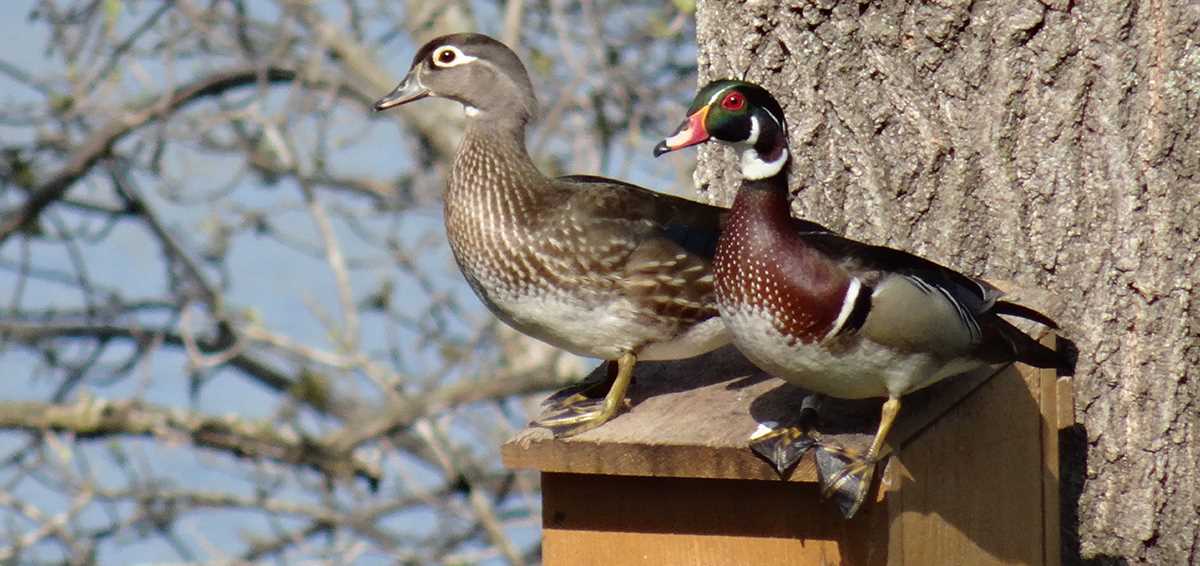Constructing and strategically placing wood duck boxes in your region offers a safe nesting area

There's no doubt many hunters have spent handfuls of shells missing wood ducks in the flooded timber or slough. Their acrobatic style and unmatched beauty make them ideal quarry. In spring, wood ducks allow avid sportsmen and conservationists a hands-on opportunity to get involved in wildlife management. This time of year the main concern is breeding habitat conditions on the prairies, but constructing and strategically placing wood duck boxes in your region offers a safe nesting area for these local birds.
It is believed that wood ducks were the most abundant ducks in pre-colonial times, but due to overharvesting and deterioration of bottomland hardwood habitat, the wood duck populations went into a steep decline. Their rebound from near extinction had a lot to do with the Migratory Bird Treaty Act of 1918, but credit also has been given to the introduction of wood duck boxes.
In 1937, the first recorded wood duck boxes were tacked up in the bottomland hardwoods and sloughs of central Illinois. After the first man-made nesting cavities were produced, biologists noticed hen wood ducks widely accepted these structures. Thousands of wood duck boxes have been put up all over the country since then and, although the preferred nesting cavities are still natural, these boxes offer a backup option when natural nesting areas are unavailable.
When searching for a nest site, the hen will carefully inspect a cavity for size, shape and security from predators. Wood duck box specifications provide all of these qualities. A first-year box might be left unused, but don't get frustrated. It generally takes two to three years for the females to find these suitable cavities.
Construction and proper placement are important. Over the years, biologists and wildlife management experts have learned that the construction and maintenance of the nesting box are more important than anything. Following the proper specifications will ensure safety from predators, provide an ample supply of material for the hen to lay her eggs and give the ducklings easy access to the outside world.
Wood duck broods will need a readily available food source once hatched, so consider these simple tips when placing a nesting box:
Biologists stress the following to every person who plans on constructing these man-made nesting cavities: If you put the box up, you must maintain it every year. These boxes can become "death traps" for wood duck broods if not cleaned out properly after every breeding season. Unwelcome inhabitants like screech owls, eastern starlings and squirrels can make homes in the boxes, rendering them useless to wood ducks.
Last season, a healthy population of wood ducks in the Mississippi Flyway allowed the U.S. Fish and Wildlife Service to up the bag limit of these beautiful birds from two to three in many states. In the eastern and western United States, it is estimated that up to 70 percent of wood ducks are local inhabitants that do not migrate.
Constructing wood duck boxes in your area will ensure these local populations have ample opportunities for a prime breeding spot in the coming years.